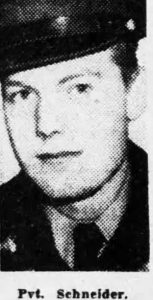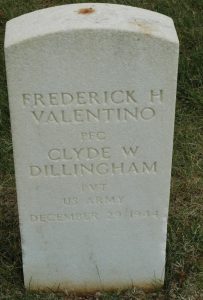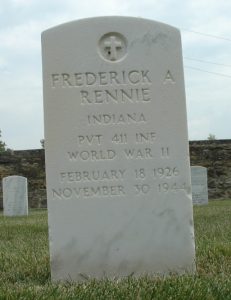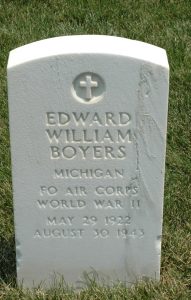
John Edmund Schneider, age 19, from District of Columbia.
Parents: James Philip Schneider
Service era: Korea
Schools: Western High
Date of death: Friday, September 1, 1950
Death details: In late July of 1950, reinforcements from the U.S. Army’s 2nd Infantry Division arrived in Pusan, South Korea, and within hours of their arrival were already being moved to the front lines along the Pusan Perimeter to help repel the invading North Korean People’s Army (NKPA). Troops were positioned along the eastern bank of the Naktong River, which was shallow enough to be crossed on foot in several places. On August 31, members of the 9th Infantry Regiment, 2nd Infantry Division, were defending the eastern shore of the Naktong, near the town of Yongsan, when at nightfall the NKPA advanced over the Naktong and began an offensive against American positions along the river. Heavy fighting broke out, and many of the 9th Infantry Regiment’s positions were overrun. Corporal John Edmund Schneider, who entered the U.S. Army from the District of Columbia, was a member of Headquarters Company, 2nd Battalion, 9th Infantry Regiment, 2nd Infantry Division. His unit was stationed along the Naktong River when he went missing near Yongsan, South Korea, on or about September 1, 1950, though specific details surrounding his loss are unknown. He was never reported as a prisoner of war, and attempts to locate his remains following the end of hostilities were unsuccessful. Today, Corporal Schneider is memorialized on the Courts of the Missing at the National Memorial Cemetery of the Pacific. His name is also inscribed on the Korean War Veterans Memorial Wall in Washington, DC, which was updated in 2022 to include the names of the fallen.
Source: National Archives, Defense POW/MIA Accounting Agency, Evening Star (1950)



